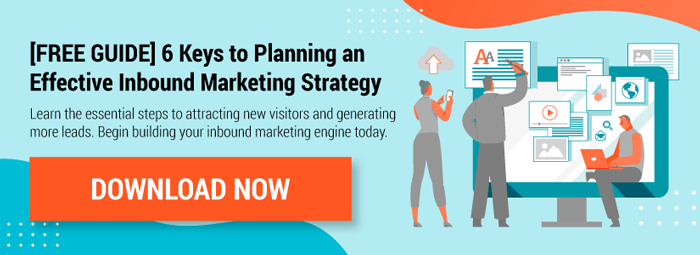To implement the challenger methodology into your organization’s sales process, both the sales and marketing teams need to be on board. Here we explore how to integrate Challenger into your content marketing strategy by:
-
Utilizing the S.I.C. Content Framework and performing a content audit
-
Providing the sales team with SPARK content
-
Writing content that introduces the frame-breaking idea
-
Creating interactive self-assessment tools to make customers aware of their pain points
If you’re in B2B Sales or Marketing, chances are you’ve heard about The Challenger Sale. It’s a book that taught us that the way we’ve been approaching sales for the past several decades is all wrong – that the buyer has changed, and that in order to win deals and avoid commoditization, organizations need to teach, tailor, and take control.
A key point in this book is that in order to “teach,” an organization needs to develop a commercial insight that changes the way a person thinks about their business, makes the pain of “same” greater than the pain of “change”, and leads them to seek a solution that only your organization is positioned to provide.
While many sales teams jumped on the opportunity to adapt Challenger methodology into their sales process, they realized that in order to be successful, the full organization needed to participate – especially marketing.
Unfortunately, with the book being focused primarily towards sales, many marketers were left unprepared and scratching their heads once those sales teams turned to marketing for support. If you’re in this bucket, we’d recommend that you read our post on why the Challenger Sale is a must-read for marketing.
Another challenge that organizations faced in adopting this methodology was that by the time a potential buyer reached out to a supplier, they were already 57% of the way through their buying process. Instead of discussing potential solutions with a sales rep, buyers now increasingly do the bulk of the research on their own – turning to search engines, social media, and downloadable content to complete their research. With such a massive shift in buyer behavior, it would be nearly impossible to successfully deploy a Challenger model without having the marketing team on board.
This same shift in buyer behavior has triggered a huge surge in interest around content marketing, with thousands of frameworks, best practices, and “how to” emerging to help marketers create exceptional content that goes viral and solves customer problems. While an increase in likes and shares is certainly nice to have, it doesn’t always equal an increase in sales.
Creating Challenging Content Paths: The S.I.C. Content Framework
 We’ve all been told that when it comes to content marketing, there are three core things you need to do to in order to be successful:
We’ve all been told that when it comes to content marketing, there are three core things you need to do to in order to be successful:
- Be a thought leader
- Be useful to your readers
- Be present
While these recommendations are well intentioned, and do have some merit, they might not be enough to make sure your content strategy is helping you meet your sales and revenue goals.

While being helpful to your readers and being present at all times is certainly a good thing, most of this content fails at first breaking down the reader’s current mental model before building up the alternative, rendering it largely ineffective.
According to the recently released book The Challenger Customer, the follow-up to the Challenger Sale, in order to get a prospect to embrace a new way forward (i.e, buy from you), you first need to show them how what they’re currently doing is wrong. As they say in the book, you need to “break down the A before you build up the B”. Makes sense, right?
So how does reframing a potential customer’s mental model translate into a content strategy? First and foremost, you need to commit to the rule that “all roads lead to insight”. This means that if your content doesn’t somehow lead someone down the path to that insight, it’s not a priority. Start with an audit.
The Content Audit
Assuming you’ve identified your commercial insight, a great next step is to do a full audit of your existing content. Look at it all – white papers, ROI calculators, blog posts, videos, testimonials and powerpoint presentations should all be reviewed. List it all out in a excel sheet or a tool like Kapost.
When reviewing this content – think about the buyer’s journey as a breadcrumb trail. Can this content somehow lead to your commercial insight? If not, flag it as content that should be removed or revised.
Next, you’ll want to categorize each content asset into the following buckets: Spark, Introduce, Confront, Commercial Insight, Product. The first three steps – (S)park, (I)ntroduce and (C)onfront make up the core SIC Content Framework. Your commercial insight is the reward at the end of the journey, and content labeled “Product” are those documents that you simply need once you’re ready to go into product specifics.
SPARK: Spark Exploration of Frame-Breaking Idea
Think of this as your TOFU (top-of-funnel) content. At this stage your content should spark intrigue and a desire to learn more. This can include infographics, interesting facts, social posts or blog posts. Remember though – each one of these items should be able to be placed at the beginning of a path that will eventually lead to your unique commercial insight, or it will never get someone to buy from you. Content can be light as it’s really meant to be a teaser.
This is where social selling comes in. By providing spark content to your sales team, they can ignite intrigue among their own network connections, which would enable them to enter the buyer’s journey ahead of that 57% mark so they can teach, tailor and take control. Arm them with a library of factoids, infographics, and other tidbits that will cause prospects to want to learn more.
It’s at this stage that you’ll have an opportunity to map your insight to a prospect’s current beliefs. In order to change someone’s mental model, you still need to get in front of an audience. For this reason, SEO matters quite a bit here. You need to know what problems people THINK they have or are already trying to solve – use this as bait to have the platform you need to spark intrigue.
This also where you need to begin breaking down the “A”, before you could build up the “B”.
INTRODUCE: Introduce Frame-Breaking Idea
Once you’ve sparked intrigue, your prospect should be saying “Hmm, I never of thought of it that way before”, and want to dive in deeper to learn more. This is where you can introduce your frame-breaking idea on the next step of your conversion path.
At this stage, you’ll want to introduce the concept in more detail so they can walk away fully understanding your position. You’ll want to introduce evidence that backs your assertions. This could be a whitepaper outlining research you’ve conducted on your own, or third party research that is closely aligned to your idea. You can also include video testimonials of others who’ve faced a similar challenge and the steps they took to address it.
CONFRONT: Confront with Frame-Breaking Idea
In some cases the first two steps may be enough. In most situations however, even if you’ve convinced the prospect that what you’re saying is probably true, chances are they’re still thinking “we’re different”. This is why you need to break it down in their own terms. You need to make it apply to THEIR business to make it real and tangible.
By encouraging the prospect to test their own situation, the pain of staying the same should feel far greater than the pain of change, which is exactly what you’re aiming for.
This can be achieved with interactive self-assessment tools, pain calculators, graders, and diagnostic worksheets. The prospect should be able to plug in their own business data in a way that makes the pain real to THEIR business, which can be quite powerful.
Tying It All Together
Once you’ve edited your content and mapped it to this framework, it’s time to fill in the gaps. If the majority of your content focuses on the benefits of your solutions and products, and does little to break down the prospects current state – you unfortunately have a lot of work ahead of you.
If you have a clear path that can lead a prospect from the initial spark of intrigue to the the rational drowning of reviewing their own data, you’re ready to put this into action. If you want to learn more about this, we strongly recommend that you buy the book.
Are you working on incorporating the Challenger methodology into your inbound marketing strategy? Be sure your stories and experiences in the comments below!










